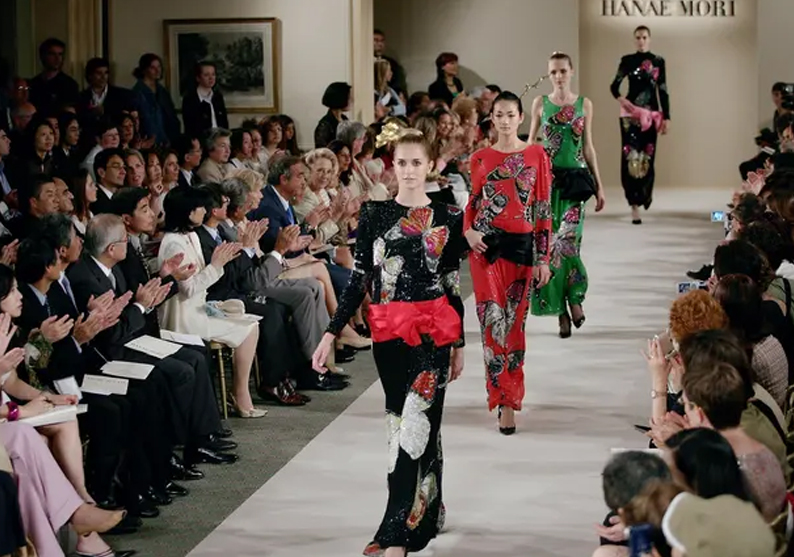Table of Contents
The fashion world mourns the loss of a true icon, Hanae Mori, the Japanese designer who not only broke into the world of French haute couture but also played a pivotal role in redefining the global fashion landscape. Her remarkable journey, spanning nearly half a century, was marked by innovation, creativity, and a relentless pursuit of excellence.
A Symbol of Japan’s Modernity:
Born in rural Shimane prefecture in 1926, Hanae Mori’s journey began in a humble setting. She studied literature at Tokyo Women’s Christian University before venturing into the world of fashion design. Her remarkable talent and dedication soon propelled her into the spotlight, and she became a symbol of Japan’s emergence as a modern and stylish nation. Mori’s pioneering spirit not only reshaped fashion but also empowered Japanese women to embrace their individuality.
Designing for Royalty and Icons:
Hanae Mori’s creations graced the closets of royalty and iconic figures. Her designs adorned Grace Kelly and Nancy Reagan, showcasing her ability to blend classic elegance with contemporary flair. Perhaps one of her most notable achievements was designing the wedding gown worn by the current Japanese empress, Masako, a testament to her enduring influence on Japanese culture and society.
Breaking Barriers in High Fashion:
In 1977, Hanae Mori achieved a groundbreaking feat by becoming the first Asian fashion house to join the prestigious ranks of haute couture in Paris. This milestone shattered boundaries and inspired countless aspiring designers worldwide. Mori’s global empire expanded to include perfumes, handbags, and publishing, with her butterfly-themed accessories becoming coveted symbols of success for working women.
The Transformative Encounter with Coco Chanel:
Mori’s transformative encounter with Coco Chanel in Paris played a pivotal role in shaping her design philosophy. Chanel advised her to embrace vibrant colors that would make women stand out, challenging the traditional Japanese concept of beauty based on concealment. This encounter led to a paradigm shift in Mori’s approach to fashion, resulting in designs that celebrated individuality and self-expression.
A Marriage of East and West:
Mori’s unique aesthetic seamlessly blended traditional Japanese motifs, such as cranes, cherry blossoms, and her iconic butterflies, with Western styles. Her 1965 collection, “East Meets West,” showcased this fusion and captured the essence of her design ethos. Her ability to bridge cultural divides through fashion resonated with audiences worldwide.
A Legacy Beyond Fashion:
Hanae Mori’s legacy extends beyond her remarkable fashion career. She designed uniforms for Japan Airlines flight attendants and the Japanese team at the 1992 Barcelona Olympics’ opening ceremony. Her impact on theater costumes, including Noh and Kabuki, was equally profound. As a businesswoman, she shattered glass ceilings, becoming the first female member of the Japan Association of Corporate Executives in 1986.
Honors and Recognition:
Hanae Mori received numerous honors and accolades throughout her life, including the Medal with Purple Ribbon from the Japanese government in 1988 and the Legion of Honor from France in 2002. Her groundbreaking achievements and global influence earned her a place in fashion history that will endure for generations to come.
Hanae Mori’s passing marks the end of an era, but her legacy as a pioneering designer, an advocate for women’s empowerment, and a symbol of Japan’s modernity lives on. Her innovative spirit and unwavering commitment to celebrating individuality have left an indelible imprint on the fashion world. As we remember her remarkable journey, we also celebrate the enduring influence of “Madame Butterfly” on the global fashion stage.





